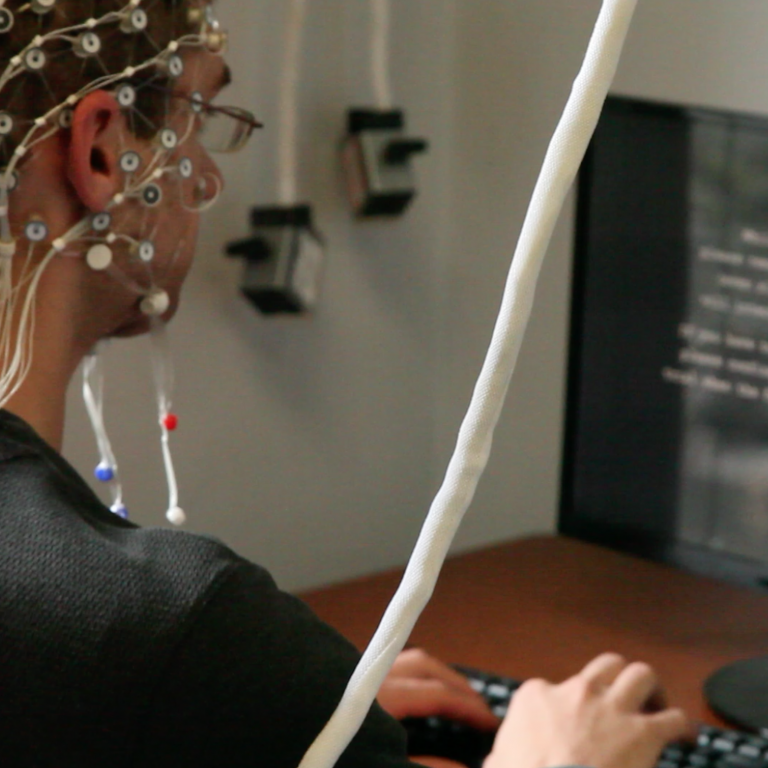MercatorNet
Lauris C. Kaldjian is a bioethicist at theUniversity of Iowa Carver College of Medicine. His research interests include end-of-life decision making, goals of care, disclosure of medical errors, the role of philosophical and religious beliefs in clinical decision making, and the integration of personal beliefs and professional ethics in clinical practice. MercatorNet interviewed him about the increasingly contentious issue of conscientious objection.
MercatorNet: Many people believe that conscience is just a matter of personal feelings and unverifiable convictions. How would you respond?
Lauris C. Kaldjian: The concept of conscience has a history going back over 2000 years. The early Christian tradition incorporated the ancient Greek idea of conscience as a universal part of human experience in which a person experiences inner pain when doing something that goes against human nature.
In the Catholic tradition, conscience has long been understood as a form of practical reasoning about ethical situations, a way of applying moral knowledge to moral action. And while philosophical assessments of conscience have their differences, a widely affirmed contemporary understanding of conscience (which I find helpful) sees it has having three dimensions: moral reasoning, moral emotion, and moral motivation.
This three-dimensional view resonates when we think of our moral experiences – the way we think, feel, and find motivation to act when faced with moral challenges.
A key point to emphasize here is that conscience is not merely about personal feelings. Reason, too, is central. When we act according to conscience, we have (and can give) reasons for what we are doing.
This connection between reason and conscience is profoundly important. It shows that conscience is not merely a private matter. Rather, it’s part of the way we exist as moral beings (‘agents’) in a moral world. And it’s involved in the way we reason with each other about ethical issues, based on our foundational beliefs and values, including our reasoning about morally controversial practices in healthcare.
For example, take euthanasia and physician-assisted suicide. While some countries and states have legalized these practices, there are major medical organizations (such as the American Medical Association) that continue to maintain that these practices are wrong.
Why?
For several reasons, one of which is that these practices are fundamentally incompatible with the physician’s role as healer. This is a reason (based on definable standards of health, healing, harm, and killing), not merely a feeling. And based on such a reason, there is an identifiable moral difference between actions that intend to sustain life or provide comfort, compared with actions that intend to end life or hasten death.
This kind of reasoning is vital, and it can be engaged in dialogue and debate because it is not merely an expression of feelings that remain hidden in the private realm of each mind.
How can it possibly be ethical to deny a patient a service if it is legal and has been endorsed by medical authorities? Aren’t you denying the patient’s autonomy?
It is true that some voices in our society want us to believe that if a medical practice is legal, available, endorsed by professional organizations, and desired by a patient – then it should be provided (or at least facilitated) by a physician whenever a patient requests it.
But there are assumptions in this expectation that need to be questioned. I will comment on two of them.
First, we need to ask ourselves whether something is ethical simply because it is legal. I would hope that everyone can agree that the answer to this question is clearly ‘no’. History demonstrates how governments have passed laws that are unethical, typically in ways that harm the weak, vulnerable, or disempowered.
The act of legalization is not morally self-justifying; an ethically valid law must have an underlying ethical justification. The normative questions of ethics (‘Is this really right and good?) cannot be set aside simply by the act of legalization. And to the extent that certain laws continue to be contested, we can see that the moral status of a practice will not be ‘settled’ by legalization if the ethical basis for legalization is not sufficiently compelling.
Second, while it is true that respect for patient autonomy is widely considered the preeminent ethical principle in Western bioethics, it’s not hard to see why patient autonomy is not, and should not be treated as, an absolute principle before which all other moral considerations must yield.
Just as the act of legalization needs ethical justification, so also a patient’s request for a procedure needs to be ethically valid. To be morally justified in the setting of shared decision making, a procedure must be consistent with the treating physician’s (or other professional’s) understanding of the goals of medicine and the patient’s health.
Usually there is so much agreement between health professionals and patients about goals and health that the process of care runs smoothly along standard lines of informed consent. However, when ethical differences arise, the mutuality needed for shared decision making means that patients and health professionals have to reach consensus on what should be done.
Patients do not act alone. They are not the sole decision makers of their medical treatments and tests (though they certainly are the ones who consent to, or refuse, their treatments and tests). Shared decision making is a mutual collaboration guided by the patient’s needs (as judged by both patient and physician), not unilaterally dictated by the patient’s preferences.
The physician is not merely a technician who serves the patient’s will, but rather a professional with independent moral agency whose role is to promote what is in the patient’s best interests. This moral agency of the physician needs to be respected.
Just as physicians need to respect the autonomy of their patients, so patients should respect the integrity of their physicians. The decision to go forward with a procedure needs to be made within the mutual respect of this two-way relationship, in which both patient and physician agree about the legitimacy of what is being done.
Utilitarian ethicists, one and all, seem to despise the claims of conscience. They have been quite influential in undermining claims supporting conscientious objection in legal judgements and ethics committees. What’s wrong with their approach?
One of the radical problems in utilitarian reasoning was highlighted some years ago by Bernard Williams, a Cambridge philosopher. It is a deficiency that strikes at the heart of efforts to understand and respect claims of conscience. Williams used the phrase ‘moral projects’ to refer to the deepest moral convictions and purposes that motivate how we live and what we do. These moral projects are shaped by the beliefs and values within the foundation of our moral character.
When these projects are compromised, we experience cognitive dissonance and negative moral feelings that undercut our moral identities. This is what happens when someone is forced to participate in an action that is morally unacceptable.
Williams points out that our critical moral assessments (and their associated moral feelings) are part of the way we relate to the world. They are part of the givenness of the moral life. To ignore or dismiss our moral assessments would be to lose our integrity, to become alien to ourselves, by denying the inseparable relationship between our moral identities and our moral reasons and feelings.
Another radical problem in utilitarian reasoning that Williams addresses is the way it prioritizes aggregate outcomes over individual integrity. On the utilitarian view, the actions of individuals occur within a network of everyone else’s actions that together influence everyone’s interests. An individual’s action is like a pebble thrown into a pond that makes ripples of water move out from the point of splash. Individual actions (on the utilitarian view) should always try to maximize the outcomes of these ripples, by increasing happiness and reducing harm for everyone involved.
In this network of causes and effects, the moral projects of all relevant persons are (somehow) mixed together and prioritized within a single aggregation that theoretically leads to the greatest total happiness. According to utilitarian reasoning, the priority of this total happiness may require an action (or policy) that conflicts with the moral project (or conscience) of an individual moral agent, such as a physician who is being asked to provide, or make a referral for, a morally controversial medical practice.
But against this view, we should heed Williams’ argument to see that when someone’s conscience is undermined, the ethical problem is not simply a matter of balancing multiple competing interests, each of which is equally serious. Rather, we should acknowledge the special moral status a person’s conscience has and reflect our recognition by giving every person’s moral integrity the high priority it deserves – especially when preserving integrity means not participating in an action believed to be unethical.
If we do so, we will not ask a conscientiously practicing individual to yield to a utilitarian calculation that artificially flattens the moral landscape by treating all interests as equal. Some interests are greater than others and should be respected as such.
Referrals are a particularly contentious area. If a doctor refuses to perform an act of euthanasia, fine. But what’s wrong with asking a refusing doctor to pass the patient to a more flexible and compliant doctor? The refusing doctor’s hands would be clean….
There are some people who believe that a referral should be a minimum requirement for doctors who refuse to perform controversial medical practices. The act of referral, they may say, is a sort of compromise that respects the consciences of physicians while also respecting the autonomy of patients. Such people might try to argue that the action of referral is not so serious because it is only a communication or administrative step, rather than the procedure itself (which someone else will perform).
But such arguments make objectionable assumptions about our responsibility for our own actions. They assume that the act of referral is not a form of participation in a morally controversial practice, and they fail to see that one’s assessment of participation is itself a question of conscience.
Physicians who are conscientiously bound to avoid making referrals for morally controversial medical practices believe such referrals make them complicit in a process that aims at a goal that is morally unacceptable. They see a line of intentionality (and therefore responsibility) that connects the act of referral to a morally controversial procedure.
Such physicians believe there is a real and serious moral relationship between intentions and actions and outcomes, a relationship that makes it wrong to participate at any meaningful step within the arc of intentionality that connects a request to a referral that leads to a procedure. For refusing physicians, referral is a morally meaningful step that cannot be provided without compromising conscience.
You argue that conscience is integrity, a unity of convictions and actions within the self. Does this mean that acting against one’s conscience is personally damaging in some way?
Yes. The widespread conviction that one should always follow one’s conscience is as ancient as the philosopher Plato. When we understand conscience as integrity, we see that living conscientiously is they way we maintain moral wholeness in our lives.
We all know how hard this can be when we face serious moral challenges. We may have to endure moral tensions posed by painful dilemmas, or prioritize core values amidst competing obligations, or face repercussions from people who disagree with us. But enduring such tensions, establishing priorities, and bearing opposition are some of the ways in which we maintain our integrity in a morally complex world.
By contrast, when we compromise our core values we fail to accept that a life of integrity needs boundaries that limit the degree to which we can conform to, or cooperate with, unethical actions or arrangements around us. These limits, as Bonhoeffer observed, allow us to remain at unity with ourselves – a unity that keeps our moral agency from being diminished or destroyed. Conscientious practice warrants deep respect because we cannot sacrifice our core moral commitments without harming ourselves as persons.
What lies ahead for American doctors who have qualms about participating in procedures like abortion or euthanasia? Will they be booted out of the profession?
This is a sobering question. For conscientiously practicing doctors to be able to continue to provide care for their patients, there needs to be enough genuine tolerance in America to sustain moral space for legitimate moral differences within the medical profession and society at large.
To the extent that we can continue to agree that procedures like abortion, physician-assisted suicide, and euthanasia are morally contested, we should be able to expect that conscience clauses in law and other policy provisions will protect freedom of conscience and provide accommodations for physicians and hospitals whose moral commitments give legitimate moral reasons for not participating in these practices.
To cultivate a professional and social culture in which serious moral disagreements are tolerated will continue to take work. It is my hope that physicians who strive to be healers who respect human life at every stage will demonstrate by their words and actions that they are not being self-centered professionals who place conscience above care, but are trying to be patient-centered, ethically serious, and reasoned professionals who know that conscience can never be separated from care.
Dr Lauris Kaldjian is Director of the Program in Bioethics and Humanities at the University of Iowa Carver College of Medicine, where he is also a professor in the Department of Internal Medicine.



